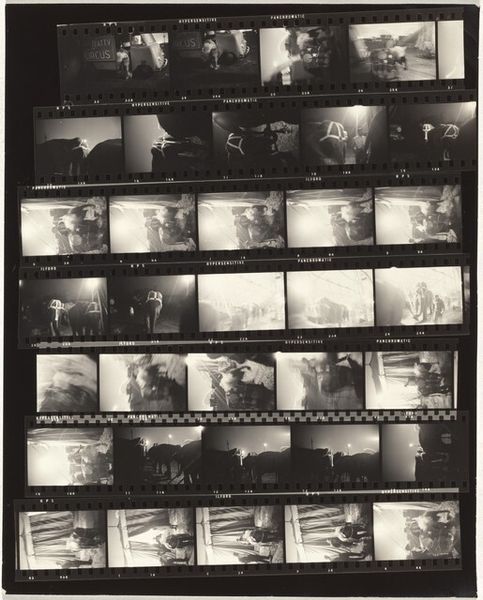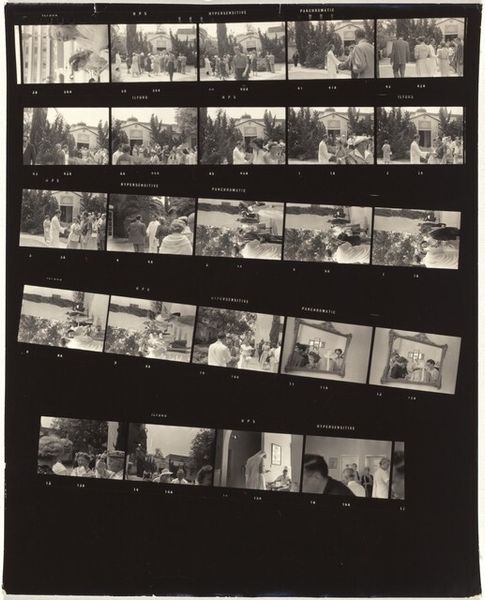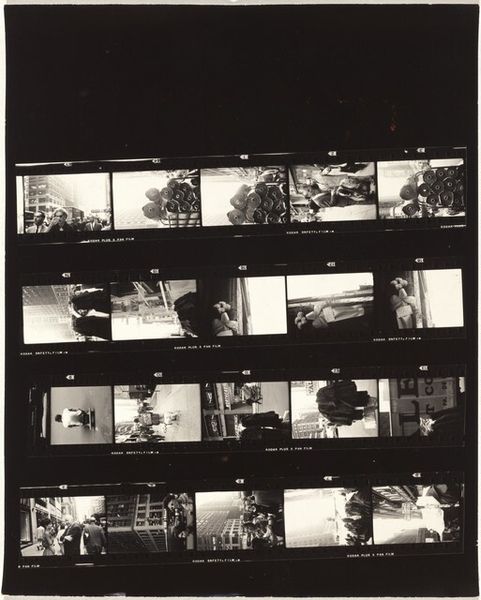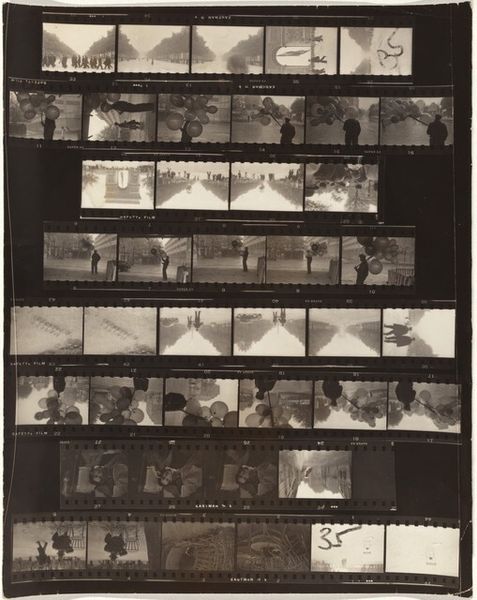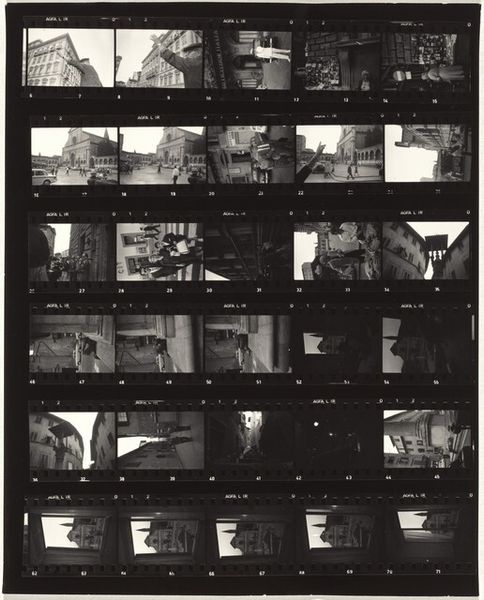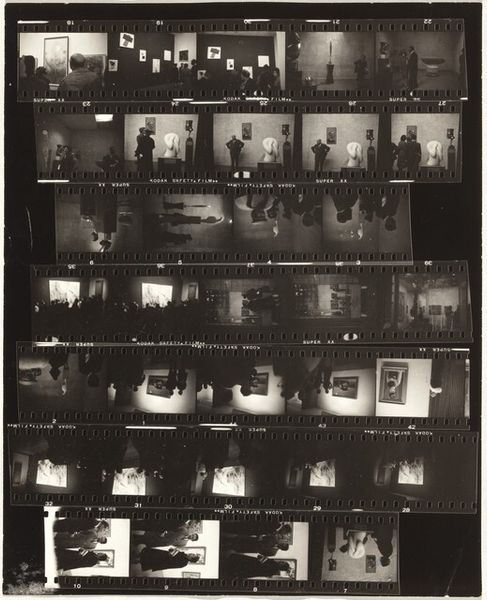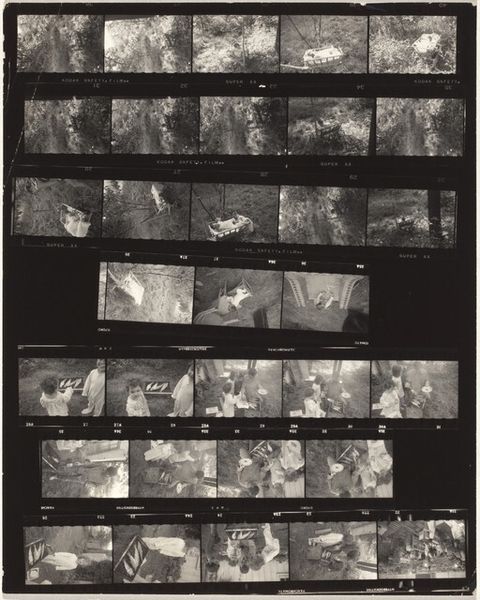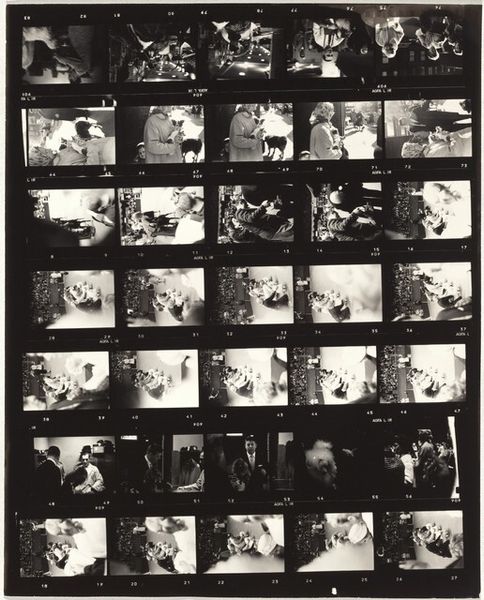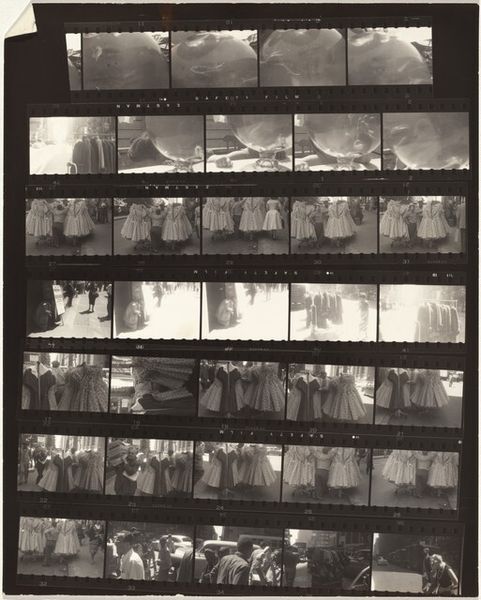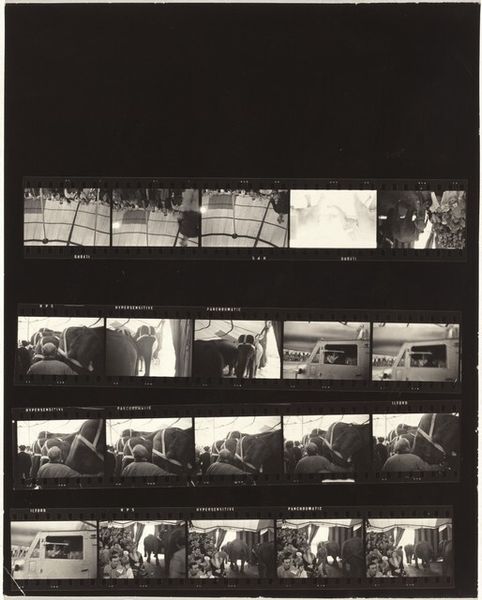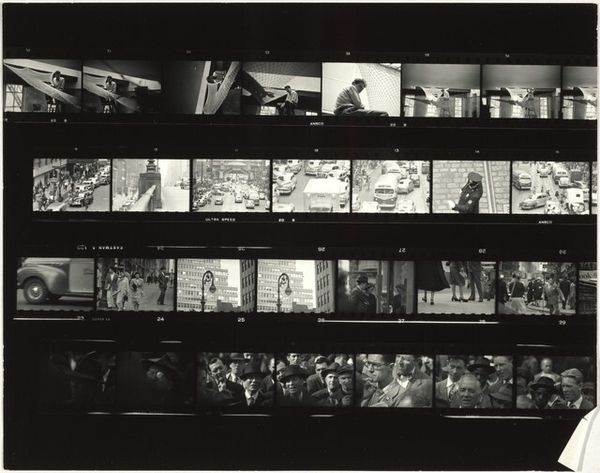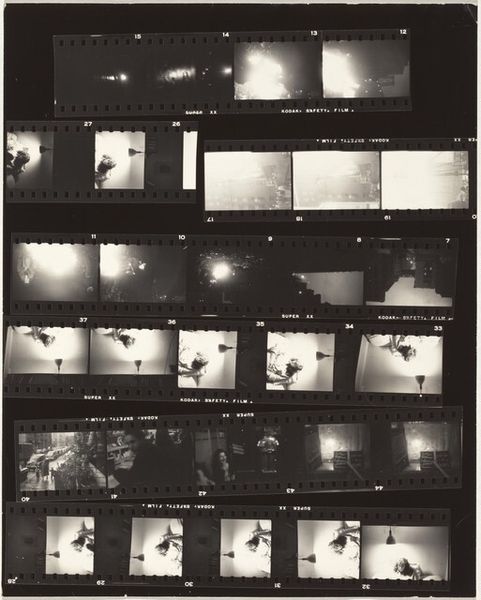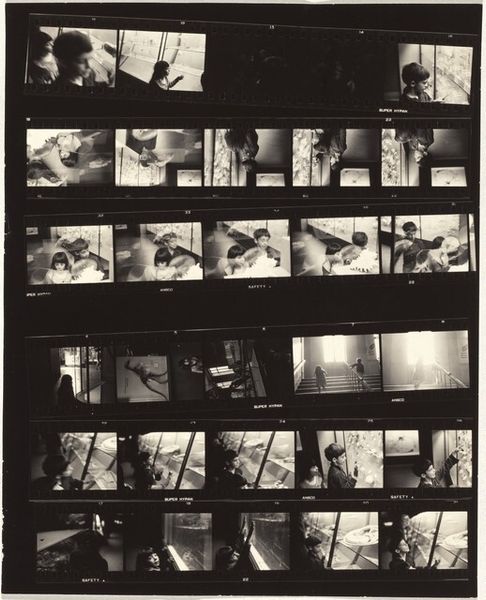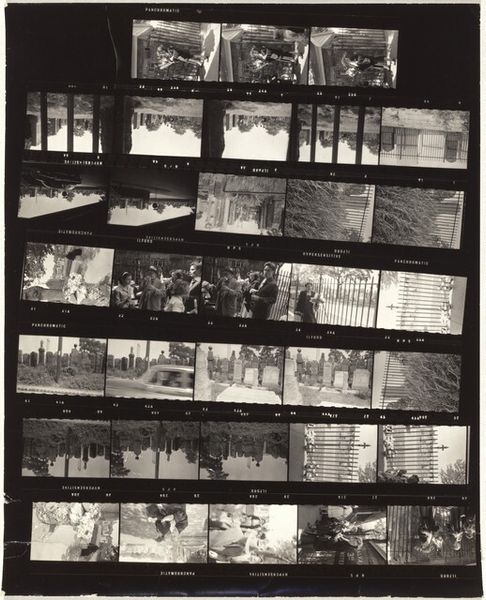
Dimensions: overall: 25.2 x 20.1 cm (9 15/16 x 7 15/16 in.)
Copyright: National Gallery of Art: CC0 1.0
Curator: Here we have Robert Frank's "Family--Wellfleet 16", a gelatin-silver print from 1962. The work is displayed as a strip of film negatives containing different frames depicting images of an interior with people inside of it, captured in monochrome. What strikes you most about this particular piece? Editor: My initial reaction is one of fragmented intimacy. It feels like glimpsing private moments through a shattered window, observing this series of seemingly mundane instants from afar, like a voyeur. Curator: That sensation aligns with Frank's larger project: dismantling idealized American narratives. He photographed subjects and scenes considered outside of conventional family portraiture. This is street photography intersecting with a portrait capturing an image from someone's family album. Editor: These seemingly random moments serve as powerful, visual cues that tap into shared human experiences, but the filmstrip format does create a layer of emotional distance, preventing viewers from getting too close. Curator: Right, and Frank's masterful command of symbols can lead to readings beyond that. Think of the prevalence of light here: most frames reveal a brightly lit room with figures almost silhouetted against it. That interior illumination, a common motif, becomes charged – suggesting perhaps revelation, inner truth laid bare, or simply domestic warmth in contrast to the obscurity surrounding it. Editor: It’s almost like an unveiling – showing that not all stories of domesticity are bright or wholesome. What would be considered a good quality to Frank’s subjects during the postwar period? Curator: Precisely. His subversion extends to photographic technique, embracing blur and high contrast to reject commercial glossiness. We’re challenged to reassess what "truthful" image-making means outside propaganda. What makes images valuable or socially acceptable? The dark aesthetic certainly helps to make these types of images intriguing. Editor: Indeed, considering the prevailing social and aesthetic standards, “Family—Wellfleet 16” dares to be vulnerable, experimental, honest. I can almost sense the artist wanting to create intimacy using very simple aesthetics. Curator: I'm struck by the cultural resilience encoded. Looking at a seemingly raw, spontaneous collection of moments and understanding something very profound is possible. Editor: And ultimately, it encourages a broader visual literacy, challenging us to interpret not just the image itself, but the artistic gesture, as evidence. It allows the average spectator to reevaluate the family as part of everyday history.
Comments
No comments
Be the first to comment and join the conversation on the ultimate creative platform.
